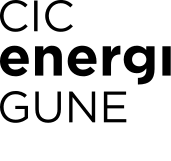The rapid growth of lithium-ion batteries (LIBs) has created an urgent need for sustainable recycling solutions to address resource depletion and environmental concerns. This study investigates the integration of cathode active material (CAM) synthesis directly into the hydrometallurgical recycling process for black mass, a concentrated mixture of active components recovered from end-of-life LIBs. By coupling metal recovery and CAM synthesis in a unified process, this approach aims to streamline recycling, reduce chemical waste, and minimize the carbon footprint of battery material production. The process begins with the hydrometallurgical extraction of critical metals such as lithium, nickel, cobalt, and manganese from black mass using optimized leaching and separation methods. The purified metal solutions are then utilized in situ for the synthesis of CAM precursors, followed by co-precipitation and thermal treatment to produce high-quality CAMs tailored for reuse in new LIBs. This integrated approach eliminates the need for separate refining and precursor production steps, significantly improving process efficiency and cost-effectiveness. Furthermore, the study investigates the trade-offs between purification stringency and process efficiency, revealing that moderate purification levels can achieve high CAM quality while reducing energy and chemical consumption. Advanced characterization techniques, including scanning electron microscopy (SEM) and X-ray diffraction (XRD), provide insights into the relationship between the structure, morphology and purity of precursors and CAM performance. This research underscores the importance of integrating CAM synthesis with a focus on precursor optimization to enhance the viability of hydrometallurgical recycling. By addressing key challenges in morphology and purification, this approach offers a sustainable, closed-loop solution for LIB materials recovery, paving the way for environmentally and economically viable battery recycling.

